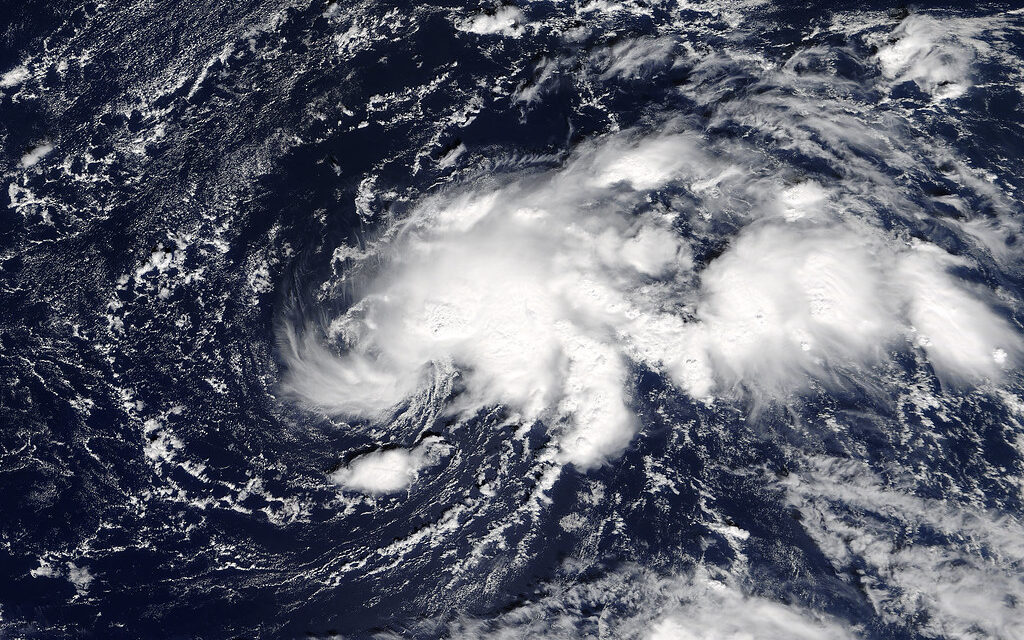Image From Creative Commons
On Sept. 29, remnants from Tropical Storm Ophelia bombarded New York with a month’s worth of rain in just a few hours, resulting in significant flooding in New York and surrounding regions. Due to these extreme weather conditions, New York Governor, Kathy Hochul, called a state of emergency for all five boroughs including Queens, Staten Island and the Bronx.
The Weather Prediction Center issued a warning for excessive rainfall and a flood watch for areas within New York, New Jersey and Connecticut. The National Weather Service in New York City issued a flash flood warning for Queens, Manhattan and Brooklyn as over four inches of rain fell throughout the area. The state remained ill-prepared for the intense rainfall.
The flooding significantly impacted New York’s transportation systems. Numerous highways were closed off, including Cross Island Parkway and Grand Central Parkway. Every line on the New York City Subway was affected by suspensions. Flights at the LaGuardia International Airport were disrupted, with officials eventually having to close Terminal A due to excessive flooding. Flights were also delayed at John F. Kennedy International Airport due to heavy rain totalling at 8.67 inches.
City officials advised residents to remain at home, but opted to keep schools in session, saying closures would result in disrupted learning.
“We have only a certain number of school days that we can utilize, and we must make sure we meet that,” New York City Mayor Eric Adams said. “We do not have any issues, dangerous issues, at our schools.”
However, over 250 schools were affected by the flooding. More than 150 schools across the state were overwhelmed by floodwaters and over 105 buses were delayed.
The effects of this storm are historic, with Sept. 29 being declared the wettest day on record in New York City since 1948. More than 90% of the total rainfall fell in one day.
“There are some New Yorkers who’ve never seen the likes of which we experienced yesterday. I mean in their entire lives. This event was historic. In some areas it was record-shattering,” Gov. Hochul said. “All of the subways are operational. Metro-North below Southeast station, Long Island Rail Road, and the Paratransit services are all functioning this morning. But it’s not just about our main focus, which is to protect the passengers. We had to protect the infrastructure of our trains and subways, even as the floodwaters were pouring into the systems.”
Experts cited the limitations of New York City’s drainage system as a major contributing factor to the intensity of the flooding. New York City’s 120-year-old drainage system can reportedly handle about 1.75 inches of rainfall per hour, but Tropical Storm Ophelia brought over two inches per hour. This resulted in the drainage system being overwhelmed and storm runoff pouring into the streets.
Gov. Hochul called this flooding a “new normal,” citing climate change as the cause, and told New Yorkers to expect similar events like this in the future.
The warm global temperature creates more heat in the atmosphere, therefore allowing the air to hold more moisture. This heavier rainfall and more severe storms. Infrastructure in major cities, such as New York City, haven’t been updated to keep up with the temperatures and extreme weather events. With the abundance of water-resistant surfaces within cities, rainwater has nowhere to go, creating flooding that can pour into businesses and houses.
New York City’s Chief Climate Officer Rohit Aggarwala has shown concern about the lack of “permeable surfaces” in the city due to continuous paving over grass and lawns.
“What that means is that there’s nowhere for the rainwater falling on that property to go,” Aggarwala said.
Aggarwala is working to lead New York City to a greener future. He’s addressing these issues by developing pockets of wetland, installing “water gardens” on sidewalks, connecting storm sewers to natural bodies of water and various other ventures that will decrease the impacts of flooding.
With most not having flood insurance on their properties, a lot of New Yorkers are ill-prepared for the increasing weather disasters, according to Steve Bown, chief science officer of global reinsurance broker, Gallagher Re.
“I’m assuming that when we start to see some of the damage totals coming out of this, that a significant portion is just going to end up being uninsured,” Bowen said. “It’s just the latest data point that something’s gonna have to change.”
Many low-income and immigrant families reside in basement apartments, which, although illegal in New York, are the only affordable options for them as the cost of living continues to rise. However, these apartments are highly susceptible to flooding, which was emphasized during Hurricane Ida. New York City has attempted to better prepare residents of basement apartments for flooding, but the excessive rain from Sept. 29’s storm caused immense damage. Because these basement apartments aren’t considered legal, they can’t be regulated for safety and are at risk of being impacted by storm water.
State and city officials have emphasized the recent flood as a significant warning of the future threats of climate change. New Yorkers must start preparing to deal with the outcome as climate change outpaces infrastructure resilience. Commissioner of New York’s Division of Homeland Security and Emergency Services, Jackie Bray, said, “There are some storms where you’re going to have a day’s notice or a day and a half’s notice. There are some storms where you’re going to have a week’s notice. We have to be prepared for events that have a day’s notice or 12 hours’ notice or no notice.”
This flood isn’t the first or last to affect New York City or cities like it. Many climate scientists agreed that the pace of climate change is rapidly increasing. This calls for the U.S. government’s budget to be spent on waterproofing cities in an effort to prevent heavy rainfall from impacting communities around the country.


